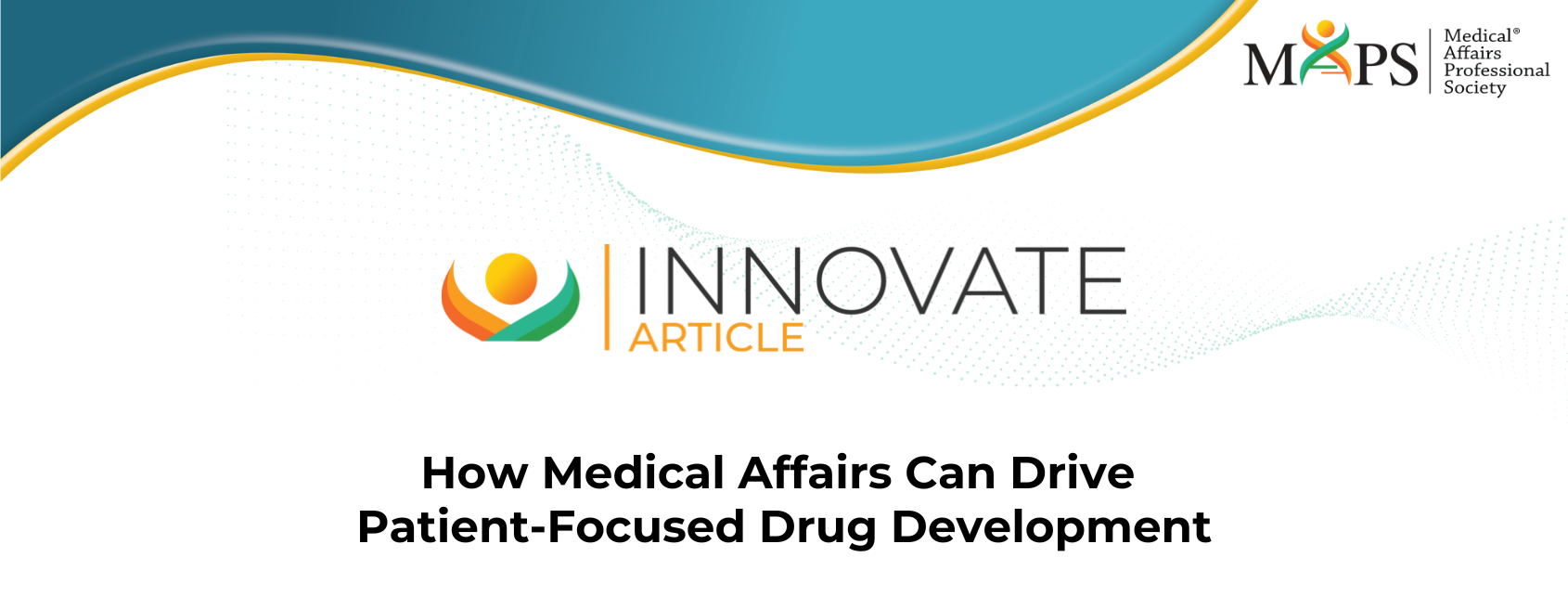2023 brings increased expectations from the FDA for patient-focused drug development (PFDD). Medical Affairs organizations need to develop new skills to put the patient voice at the center of drug, device, and diagnostic development and evaluation.
One of the central challenges in drug development has always been matching new treatments with gaps in the marketplace felt by patients. To address these gaps, Medical Affairs organizations are charged with bringing real-world insights to the development process. These insights can help inform everything from clinical trial endpoints that become indications on a new drug’s label, to the identification of side effects that could be managed to help patients stay on treatment, to knowledge gaps that could be addressed by education. The reality, though, is most Medical Affairs organizations were not tasked with incorporating large amounts of patient data into their work. They now face the challenge of figuring out how to meet these requirements quickly and effectively. It starts by recognizing the mismatch between patient priorities and the priorities of key opinion leaders (KOLs).

Eric Peacock
The Mismatch: Real-World Patient Priorities vs. HCP and KOL Perceptions
Medical Affairs organizations have spent decades developing systems of scientific exchange that result in insights from health care professionals (HCPs) and key opinion leaders (KOLs). However, there is a growing awareness of a mismatch between what these professionals report and the real-world needs of patients. One example is the underreported symptom of extreme pain during and after sexual intercourse for people with endometriosis. Despite the prevalence of this symptom, patients rarely shared it with their HCPs. Discovering the difference in patient perspective compared to the HCPs’ provided a clearer understanding of the disease’s impact on quality of life.
Most companies have relied on small patient advisory boards for input. That is not what the FDA has in mind with PFDD, and most organizations recognize the risk of making clinical trial decisions worth millions of dollars based on the opinions of a handful of patients on an ad board. While ad boards are directionally helpful, they should be validated with feedback from a large group of patients.
Listening to the Patient Voice — At Scale
An emerging alternative is the use of patient opinions expressed in online communities. Think of Facebook support groups: In these communities, patients with specific conditions come together to discuss their health and sometimes even provide helpful advice on living with the condition. Even more focused are the patient communities created by MyHealthTeam — a company that has created social networks in 45 chronic conditions, with 3.5 million registered members and growing.
“Patient social networks are designed to both help patients and make sure the patient voice is heard, and members of these social networks are eager to engage with pharmaceutical companies at all stages of drug development. You can survey 1,000 patients and have publishable results in a matter of weeks. You can engage them on an ongoing basis on nearly any topic about their condition. Think of it as a real-world data approach to getting patient input at scale,” said Eric Peacock, MyHealthTeam co-founder and CEO.
Larger sample sizes often lead to very different implications for drug development. For example, Eric pointed to a recent client who was trying to evaluate the preferred delivery method for a new medication for an autoimmune disease. The initial patient advisory board was split about which method they preferred. But a survey of hundreds of members of that particular condition’s community found patients had a strong preference for one delivery method. The analysis provided a clear understanding of the factors driving the decision-making for different patient segments. Hearing from patients at scale allowed the company to move beyond directional data to data that could inform an investment decision.
What the FDA Expects
The FDA included four guidance documents in its recommendations for PFDD:
- Collecting Comprehensive and Representative Input
- Methods to Identify What is Important to Patients
- Selecting, Developing or Modifying Fit-for-Purpose Clinical Outcomes Assessments
- Incorporating Clinical Outcome Assessments into Endpoints for Regulatory Decision Making
Collectively, these guidelines ask the industry to put processes in place to identify patient-centric factors, such as burden of disease and burden of treatment. Once these patient-centric endpoints are identified, PFDD includes using these endpoints in clinical trials in such a way that addressing them may become part of the indications on a drug’s label.
“Today, showing up to a protocol review or regulatory filing without compelling data from patients on burden of disease, burden of treatments, and desired outcomes can lead to costly delays,” Eric said.
Example: Understanding the Burden of Disease
Take the case of a recent MyHealthTeam client who is developing treatments for inflammatory joint symptoms of psoriatic arthritis (PsA). A three-week survey of the MyPsoriasisTeam community resulted in 584 responses, which overwhelmingly indicated that stress, pain, and embarrassment due to the condition resulted in a moderate or severe impact on community members’ daily activities. Additionally, these symptoms often led to social self-isolation. Importantly, a third of psoriasis patients reported inflammatory joint pain — likely an indication of disease progression to PsA — but only 11 percent were taking a biologic treatment.
These results were shared in a poster presented at the Fall 2021 Clinical Dermatology Conference in Las Vegas. The poster’s conclusion read, “These real-world data suggest that patients with suspected or confirmed PsA may be undertreated. Management and therapies for psoriasis and PsA should effectively address both the physical and emotional aspects of the disease.”
Using this approach to PFDD required eight weeks from survey to publishable results.
Example: Understanding the Burden of Treatment
Listening directly to patients has benefits beyond making the case for drug development. Take the example of a disease-modifying treatment (DMT) to treat relapsing-remitting multiple sclerosis. After the drug earned regulatory approval, it was obvious that real-world outcomes supported the promise seen in clinical trials. It was also obvious that many patients weren’t staying on the treatment because the side effects were so significant.
“Patients were saying they were bloated, gassy, flushed, and had diarrhea within a few days of starting the drug,” Eric said.
Within the closely monitored protocol of a clinical trial, patients pushed through these side effects. In the real world, “Many patients just said, ‘This sucks!’ and quit treatment,” Eric said.
However, providers at NYU Langone’s Multiple Sclerosis Comprehensive Care Center started to develop a protocol of introducing the treatment gradually and pairing medication with a high-protein snack just beforehand (plus Benadryl, if needed). This seemed to lessen side effects. Patients began sharing that technique with each other and discussing it on MyMSTeam. The findings were shared with the manufacturer in a social listening study conducted with the MyMSTeam community.
The company was able to conduct a 12-week trial to validate that taking the DMT with a meal would reduce symptoms, which allowed medical affairs to communicate tips for reducing side effects on the company’s website.
Informing HCPs: An Additional Benefit of Listening to Patients
These examples show how insights from patient communities can influence the decisions and actions of pharmaceutical and MedTech companies. Insights from these communities can also help HCPs make more informed clinical decisions with a better understanding of the patient perspective.
Hearing From Patients at Scale
Ultimately, this is all about listening to patients. Not just five or 10 patients on an advisory board. And not just the people who speak for patients, like clinicians and researchers. But listening to a broad base of patients who can communicate the hopes, priorities, and struggles of people living with health conditions.
Being open to the new and evolving ways we can involve patients in drug design, treatment, and follow-up care is a step toward providing benefits that go beyond safety and effectiveness to speak to the real needs of real patients in the real world.
The Innovate article series highlights the ideas of Medical Affairs thought leaders from across the biopharmaceutical and MedTech industries. To submit your article for consideration, please contact MAPS Communications Director, Garth Sundem.



